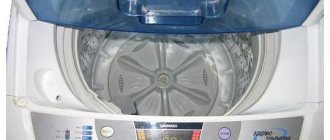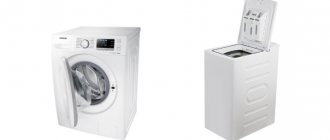The dishwasher was invented to make the work of housewives easier. Now it is present in almost every kitchen. With their stylish design, dishwashers fit perfectly into a modern, technological interior. Even the smallest models can handle a lot of utensils. If the family is large, and the size of the kitchen allows you to accommodate a dishwasher, and even a large one, then this is a good reason to buy a larger device. Just one session is enough to clean all dirty dishes. Saving time in everyday life is very important, so it is better to avoid routine actions and transfer as many functions as possible to household appliances. Additional time can be spent on other chores. For any dishwasher, size is one of the main aspects, and sales advice and general information will help you decide on it.
What to look for when choosing a dishwasher
The first thing to know is performance. Machines of the same brand wash dishes with varying success, and the price is not always directly dependent on this factor. The best PMM models ideally remove grease from plates that have remained unwashed for 2-3 days. Another important selection criterion, the noise level largely depends on the cost of the device. Even noise ratings have been compiled. If old cars produced a sound pressure of 80 dB, now the figure has dropped to 50 dB. For the average price range it is in the range of 40-50 dB, and for cars in the expensive segment the noise level is below 40 dB. There is no need to skimp on comfort. Next, pay attention to the number of speeds and modes. Modern dishwashers have the following modes: normal, auto, express. You can get more benefits with machines with heavy, gentle and effective modes.
Other aspects:
- consistency with the finishing style;
- dimensions;
- capacity;
- filter type;
- drying power.
Types of dishwashers by size
Based on the sizes, there are:
- full size;
- narrow;
- compact.
Each case needs its own option. In restaurants with a large flow of customers, dozens of sets need to be washed at a time. On private property we are talking about 15-20 plates over several days. Unlike ovens, dishwashers do not have the same standard sizes. The height from the floor of tall full-size and narrow models is 818-898 mm. The depth of traditional options is 570-600 mm, which is ideal for the lower tier of the kitchen. Some compact modifications are only 450 mm deep or less. The dishwasher base is quite high - 120-190 mm. The highest variations are nineteen centimeters - about 97 cm. The lowest models of the compact type are below the level of 45 cm. They are placed anywhere: under the table, on it, in small recesses and in free space. The width of dishwashers is 30-65 cm. A family of 2-4 people does not need to buy full-sized machines.
For private houses with two kitchens, it is better to purchase not two full-size dishwashers, but one with an increased width.
Full size
Such machines are suitable for large families and large kitchens, as well as for restaurants. Full-size models are 59.5–60 cm wide, 56–63 cm deep and 81–85 cm high. The standard size parameter is 60x60x85 cm. Full-size dishwashers are designed for a large volume of dishes, up to 14 sets. Large capacity reduces the total number of PMM operating sessions and significantly reduces the need for manual washing. Positive qualities are complemented by energy savings with high efficiency and volume of work. Owners of small kitchens, unfortunately, are deprived of such opportunities. In tight spaces, full-size PM machines are replaced with standard 45-centimeter models. For some housewives, a full-sized PMM is a serious hindrance. You can make work in the kitchen easier by removing the dishwasher altogether.
Narrow
This is the name for models with a width of 40 to 45 cm. Equipment with a 45-centimeter width is capable of washing 8-9 sets of dishes at a time. The depth of the units coincides with that of full-size modifications. The height of narrow dishwashing machines reaches 85 cm, as is the case with full-sized ones. The general functionality of the narrow options is also in no way inferior. In Russia they mainly sell 45 cm models, but 40 cm ones have to be ordered. A less capacious device will then cost more. Narrow models look best with furniture sets. Among the many narrow dishwashers, designer options are often found. They are easy to use and maintain, and by definition make less noise than larger models. The problem with some narrow PMMs is that they cannot be placed under the tabletop due to their height, but in this case a lot depends on the height of the table/cabinet itself.
Compact
The third subspecies in terms of size characteristics is compact. The configuration of these dishwashers comes with a small width - 35 cm or less with a depth of up to 60 cm, as well as with a small depth - up to 45 cm with a width of 40 cm to 60 cm. The height of compact variations rarely exceeds 50 cm, standard models have 44-45 cm in height. Considering all the functions of small dishwashers and the typical amount of dishes that accumulate over several days, this is a viable option for most cases. If necessary, compact PMMs are installed on the table. In addition, they are easily mounted in wall niches and specially designed furniture sections. The won space is filled with other kitchen appliances. Compact PMMs are suitable for washing all types of dishes. Well, the main advantage is the opportunity to save money.
Which size will be better?
Manufacturers produce different equipment. Some models fit into existing standards, while others not so much. Typically, the so-called luxury dishwashers, which represent the most expensive segment, differ from accepted standards.
There are several factors to consider before choosing the appropriate machine option to install:
- Needs in relation to capacity. How much dishes are washed and how often? How many people make up a family?
- General dimensions of the kitchen area where the machine will be installed. Is there enough space to install a freestanding model? Or is the built-in option better because it saves space?
- Cost of the car. Compared to full-size options, narrow ones are often cheaper. Compact machines are the most budget option. The standard sizes of such dishwashers are suitable for everyone.
Characteristics and dimensions of free-standing PMMs
Such dishwashers are installed anywhere, unlike fully or partially built-in ones. Free-standing modifications are divided mainly into floor-standing and table-top, that is, they are adapted to specific conditions and are rarely made universal. Almost all mobile models are intended to be household, not industrial, but in enterprises and industries there is not always a need for PMMs other than household ones. The width of free-standing variations rarely goes beyond 45-65 cm. The height of free-standing equipment differs significantly, but is selected so that the unit can be hidden under the dining table. In some cases, it reaches almost 1 m. Comfortable use of free-standing PMMs is possible with a thickness (depth) of no more than 60 cm. The optimal depth for compact kitchens is 40 cm.
When choosing the depth of your dishwasher, you should also consider how much the handles protrude.
Large dishwashers
PMMs from 60 cm and wider are called large-sized. Moreover, 70 cm is far from the largest size. In the household departments of hypermarkets, they even display models with an 85-centimeter width - non-mass-produced devices. Wide machines can accommodate up to 20 sets of dishes. For a family of 5-6 people, full-sized PMMs are usually enough, but large ones are suitable if they do not take up too much free space. Before you buy something from the large-size line, you need to allocate space for equipment. Dishwashers are installed not only in kitchens, but also in bathrooms and dead-end rooms. Large-sized models can hold more dishes, although the stated capacity may be the same as simple full-size machines. Extra large devices handle pots and pans much easier.
About supported programs
Budget models rarely support more than 4-5 programs. Among them there will probably be such opportunities:
- Rinse. When food residues are removed with a machine during 5-7 minutes of constant processing.
- Washer for heavily soiled dishes. Suitable for items that are burnt or dry. The cycle involves maintaining 65-60 degrees and takes the longest time for equipment.
- Short wash . If the dishes do not have a lot of dirt.
- Normal washing mode . Medium cycle, at temperatures up to 60 degrees.
The best and more expensive models already have 8-10 working cycles. One of the useful features is half loading. This means you don't have to wait until there are too many dishes to clean. Some models allow you to reduce the temperature but increase the cycle time. Others include an additional mode for processing crystal and other similar fragile objects.
Advantages and disadvantages of compact PMMs
The size of the machine depends on the energy consumption, hot and cold water consumption. Mini PMMs can be separate or built-in, and a variety of installation options are possible - on the floor, on a table, partial and full installation. The main advantage of small PMMs is their size. A small rearrangement in a cramped kitchen is all it takes to find space. Since the load is small, you won’t have to wait as long as it would take to fill large units. The installation process of mini-models is as simple as possible, and power consumption in the most productive mode is relatively low. Mobile mini PMMs are much easier to move than others. Among the disadvantages are difficulties with washing baking sheets, pans, and pots. Some things won't fit at all. It is worth noting that constant washing when the machine is completely full affects the condition of the equipment. Another drawback is the price. Compact models sometimes cost almost the same as larger ones, but at the same time they are more spacious.
Functionality, pros and cons of small/mini PMMs
Due to the small depth of mini PMMs, they are useful for small families. Tabletop options, for example, can accommodate up to 6 sets of kitchen utensils. Due to the peculiarities of its operation, it is allowed to be used on shelves, including inside wall-mounted furniture sections. The most common devices are those with a height of 45 cm. The smallest PMMs resemble microwave ovens. Compact dishwasher programs include pre-soak, delicate, standard and express modes. To correctly connect compact models, just read the short instructions. There are some disadvantages. It is most likely not suitable for large families. After all, if a family consists of 5 people, everyone may need at least a couple of washed dishes at any time. For places other than apartments and small houses, mini PMMs are not suitable.
Small narrow dishwasher under the sink
Location under the sink is the second most popular solution. Narrow, compact options fit easily under the sink. Thus, the dishwasher and faucet are closer to each other, and it is more convenient to use them in pairs. Installing under the sink is also a huge space saver. Mini PMM with a width of 40 cm washes up to 5 sets at a time. The devices are provided with protection against leaks, so there is no need to worry about the condition of equipment that is closed with a door and is not in plain sight. A forty-centimeter mini PMM is also used in dachas, although for such a place of application it is a rather expensive option per unit of power. Narrow mini-dishwashers are not used for washing kitchen utensils made of porcelain, wood and plastic. Among other things, the possibility of installation depends entirely on the configuration of the kitchen. In general, the option is convenient and aesthetic.
Which dimensions are better in terms of functionality?
At first glance, we can say that the large size of the device provides maximum functionality. In fact, most slim models have just as many options as full-size models. The large appliance allows you to wash several dishes at once.
To its advantages you can also add the ability to wash large pots and pans, while in narrow models not all dishes fit into the given size. If we talk about compact models, then you cannot wash a large tray or a large pan in them.
A larger dishwasher will hold many more dishes.
Another thing to consider is what functionality is really important. For example, not every home will have glasses that cannot handle hot water. Or not every housewife will buy an expensive laundry detergent with bioadditives in the store.
Most dishwasher operating modes are used only once for evaluation purposes. The average family uses only three programs: day, intensive and express.
Only owners of large kitchens can fully comment on the choice of functions. The rest (owners of kitchen corners) must be content with those options in which the device is barely squeezed into a narrow space, because they are the ones who buy built-in appliances.
Dimensions of built-in dishwashers
Furniture for small-sized kitchens is designed for the use of built-in household appliances. Integrating devices into a set is also a design move. Furniture niches are designed according to the most popular dimensional characteristics. All that remains is to find the technique with the required parameters. There are also opposite recommendations: select a furniture set after purchasing kitchen appliances. Built-in PMMs come in full-size, narrow and compact. The first type has a width in many cases of 60 cm, a depth of 55, and a height of 82 cm. The size of the typical narrowed version is the same in terms of height and depth, but the width is 15 cm shorter. It is better to “fit” a 35-centimeter model into a stylish modern interior. Compact built-in options vary greatly in terms of configuration. A machine with a depth of 50, a width of 55 and a height of only 44 cm is often installed in the wall.
Height of dishwashers: built-in and freestanding
The level of placement of the countertop is important - for equipment built into the lower tier. The second factor is the height of the owners: mini-devices for shelves may be inaccessible for short people. That is why the average growth rate is taken into account. The lower part of the built-in and free-standing versions of the PMM is equipped with legs of different heights, and sometimes they provide the possibility of adjustment by 5-6 cm. Physical activity must be taken into account. Heavy PMMs, even mobile ones, are difficult to rearrange many times, so the constant storage height should be placed at the level of your lowered arms or slightly lower. High placement is generally dangerous. If the dimensions of the niche are known, proceed to measuring the parameters of the dishwasher. Even when buying a kitchen wall, you need to be interested in various nuances. To accommodate built-in dishwashers with a height of 70-97 cm, an appropriate distance between shelves is required, unless a special niche is provided.
Dishwashers are divided into 3 categories based on height:
- Low - up to 55 cm;
- Medium - 55-81 cm;
- Tall - 81-97 cm.
Low PMM 43.5–50 cm
These units mainly include compact models:
- Candy CDCP 6/E is a free-standing miniature PMM with condensation drying and a water consumption of 7 liters per cycle. Dimensions 55x50x43.8 cm (WxDxH).
- Bosch Serie 4 SKS62E22 - 45 cm.
- Midea MCFD-55200S - 48.3 cm.
- Indesit ICD 661 - 48 cm.
There are currently no machines on the market with a height of 50 cm, but it is easy to find options much lower, up to 43.8 cm.
On a note! The PMM, whose “height” is 55 cm, is represented by the Leran trademark - CDW 55-067 WHITE. This is a compact stationary machine with a capacity of 6 sets of dishes, 7 programs and a noise level of 49 dB.
Built-in dishwasher 60 cm high
These are relatively low-profile models among full-size dishwashers. They fully satisfy the needs of the average family. The option with a 60-centimeter height is both spacious and compatible with sections specially designed for the installation of equipment. There is space for built-in dishwashers in medium and small kitchens. Most often, a compartment under the countertop is allocated for the mounted PMM, just for a device no more than 60 cm in height. In most cases, the module under the PMM is designed with a door. The machine is controlled either on the door or on its end, so in a closed-type module the second option feels extremely inconvenient. If the dishwasher barely fits into the cabinet, then adjustable legs will come in handy. At the same time, built-in models are still 2-3 cm lower than free-standing ones. As for the location of the desired cabinet, it is usually located next to the sink.
How to choose a place to build a machine
Most often, a dishwasher is purchased for an existing kitchen. This means that it is necessary to adjust the dimensions of the dishwasher to the existing cabinet, which, by the way, also has its own standards.
In the floor closet.
You can choose one of the options:
- If the dimensions for installation are correct, we install it in one of the floor cabinets. It happens that the stove and oven have not been used for a long time (cooked in a multi-channel stove, microwave).
- Since the width of the dishwasher is the same as the width of the stove, it may be wise to simply replace the unused equipment with a suitable one.
- A good option is to install it under the kitchen sink. A less successful solution would be to create a niche in a wall cabinet. The worst option would be to install it on top of the refrigerator.
- Loading and unloading the dishwasher is extremely difficult in this case.
But, as they say, “if you can’t do it, you’d really like it.” If a dishwasher is in great demand, and its dimensions do not allow you to find a convenient place for it, then it is up to you to decide whether you are ready for some inconvenience of having such equipment in the kitchen.
Narrow dishwashers 45 cm wide or less
45 cm models gained popularity among consumers at a time when all manufacturers were trying to reduce the size of any kitchen appliance. PMMs up to 45 cm wide are intended for use in tight spaces and square-shaped rooms. Both freestanding and built-in models are designed to save space. The mobile version can simply be hidden under the table. For a stationary dishwasher, you will need a special drawer so as not to take up space in the cabinets for large appliances. It is possible that such a module can be found on sale, but most likely you will need to wait until it is manufactured according to the specified parameters. The height of 45-centimeter dishwashers reaches the same values as conventional ones - from 60 to more than 90 cm. The thickness, in turn, is consistent with the depth of the lower kitchen unit - 60 cm.
How to correctly calculate the dimensions for a built-in PMM
The calculations are based on measuring the installation site. You will need to measure the height, width and depth of the cabinet, cabinet or niche. You need to choose based on these parameters with the deduction of a few centimeters. It is also advisable to buy devices with adjustable legs, even if we are talking about a compact dishwasher. Changing the height of the legs is an additional option for convenient placement in a closet/niche. The installation space must meet a number of criteria. First of all, these are right angles. Openings for the electrical cable, drain and drain hoses are also required. The standard depth of free space under the countertop of the kitchen work area is 58 cm with a width of 60 cm. The height depends on many factors, but is usually 82 cm. This is enough for models up to 81 cm. A large group of dishwashers has a height indicator of 60 cm. Height compact built-in installations are usually 45 cm.
PMM 81–82 cm
The choice of such dishwashers is quite wide:
- Electrolux ESL 94200 LO (82) - fully built-in, 9 sets of dishes, 10 liters per cycle.
- Indesit DISR 16B (82) - 10 sets, 10 liters, 6 modes.
- Hotpoint-Ariston LSTF 9M117 C (82) - for 10 sets with a flow rate of 9 liters per cycle. There are 9 modes in total.
- Bosch Serie 2 SMV24AX02R (81.5) - the hopper holds up to 12 dish sets, 11.7 liters are consumed per wash. 4 washing modes, 2 temperature levels.
Installation tips and tricks
It is recommended to install the dishwashing device at a distance of no more than one and a half meters from the drain point. Otherwise, the likelihood of problems with the drain hose will increase and its effectiveness will decrease. In everyday life, the best installation option is considered to be a place next to the sink. When installing on the floor, it is important to ensure reliable contact with the surface. Water supply, in turn, is best done with a separate pump, with additional cleaning means. If you ignore this precaution, microparticles and rust from the water supply will damage the machine long before the maximum service life has expired. The drain point is prepared in advance. It is advisable to arrange a direct drain into the sewer. Installing stationary PMMs is not as difficult as it seems, but it is important not to damage the wires and furniture partitions.
You should buy machines with a leak protection system. For example, with one of these:
- AquaStop;
- Waterproof;
- Aqua-Control;
- AquaAlarm.
Energy consumption, drying and washing
Nowadays, almost every apartment has so-called electricity meters inside. Therefore, one of the important characteristics of a machine is the amount of resources it consumes during operation. To designate classes for drying, washing and energy consumption, the letters A, B, C, D are used.
The most economical versions of the machine have the letter A in their markings. The best dishwasher models are AAA rated.
These letters mean that the model has several important advantages:
- The machine consumes a minimum amount of electrical energy.
- Maximum effective drying.
- Rinse the dishes completely, without any residue.
And high energy efficiency indicators do not always lead to an increase in car prices. One example of budget models is developments like the Zanussi ZDT 12002 FA. The drying class is determined by what equipment is installed inside. This can be turbo drying or a condensation type. Both options are easy to implement.
The condensation option involves cooling the rear wall of the equipment. The dishes are rinsed with hot water and left for a while. Moisture is removed when hot and cold air come into contact with each other. Because of this, the time required for washing increases.
Class B most often includes machine models that support condensation drying.











